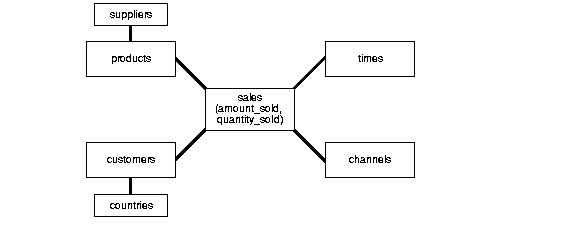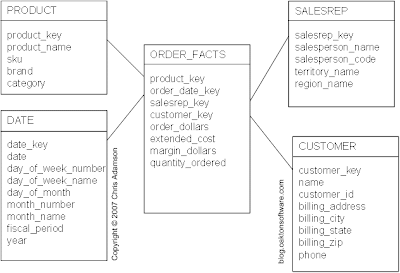Star Schemas
The
star schema is perhaps the simplest data warehouse schema. It is called a star schema because the entity-relationship diagram of this schema resembles a star, with points radiating from a central table. The center of the star consists of a large fact table and the points of the star are the dimension tables.
A star schema is characterized by one or more very large fact tables that contain the primary information in the data warehouse, and a number of much smaller dimension tables (or lookup tables), each of which contains information about the entries for a particular attribute in the fact table.
A
star query is a join between a fact table and a number of dimension tables. Each dimension table is joined to the fact table using a primary key to foreign key join, but the dimension tables are not joined to each other. The cost-based optimizer recognizes star queries and generates efficient execution plans for them.
A typical fact table contains keys and measures. For example, in the sh sample schema, the fact table, sales, contain the measures quantity_sold, amount, and cost, and the keys cust_id, time_id, prod_id,channel_id, and promo_id. The dimension tables are customers, times, products, channels, and promotions. The product dimension table, for example, contains information about each product number that appears in the fact table.
A star join is a primary key to foreign key join of the dimension tables to a fact table.
The main advantages of star schemas are that they:
- Provide a direct and intuitive mapping between the business entities being analyzed by end users and the schema design.
- Provide highly optimized performance for typical star queries.
- Are widely supported by a large number of business intelligence tools, which may anticipate or even require that the data-warehouse schema contain dimension tables
Star schemas are used for both simple data marts and very large data warehouses.
presents a graphical representation of a star schema.







